The origins of astronomy can be traced back to ancient times, making it one of the oldest scientific disciplines. An important practical aspect of this field of study was its ability to assist with navigation and orientation.
Astronomy and astrology
As far back as the Middle Ages and Ancient Egypt around 4 thousand BC, people have been involved in the study of astronomy. Egyptian priests and ancient Chinese astronomers, as early as the 2nd millennium BC, were able to predict lunar and solar eclipses. Subsequently, significant advancements in the field of astronomy were made in ancient Greece.
In the beginning, astronomers regarded the purpose of their discipline as the documentation of the movement of celestial bodies in the sky, which included the Sun, Moon, stars, and planets. During ancient times, astronomy was divided into two branches. One branch focused on the influence of astronomy on human life, known as astrology. The other branch concentrated on the development of theoretical mathematical models capable of describing the movement of celestial bodies and enabling the anticipation of their future positions.
Calendar
Around 3000 BC, people used their knowledge of astronomy to create a calendar that divided the year into 365 days. This happened during the time of the Sumerian civilization in the Inter-Area, where they also named the constellations. We still have Babylonian astronomical texts today, some of which date back to the XVIII-XVII centuries BC. In the 5th century BC, Babylonian astronomers introduced the signs of the zodiac. Ancient Greece also made significant advancements in astronomy as early as the 6th century BC. Greek astronomers were able to use geometric methods to describe the movement of celestial bodies.
Cosmological systems in Ancient and Medieval Times
The earliest known Greek astronomers are Anaximander and Pythagoras. Pythagoras is credited with being the first to propose that the Earth is a sphere. Plato, who lived between the 5th and 4th centuries, put forth the idea that the movement of celestial bodies is uniform and circular.
Plato’s notable accomplishments include the establishment of a scientific school and the instruction of worthy pupils. One such pupil was Eudoxus of Knidos. Together, they devised a concept of the cosmos in which it is comprised of a series of spheres orbiting the Earth. In this model, the Earth is positioned at the center of the universe. This concept was further refined by Callips of Kizik, Ptolemy, and Aristotle, who expanded the number of spheres to 55. Eventually, this model became known as the Ptolemaic system and remained unquestioned for much of the Middle Ages. However, even in ancient times, Apollonius Pergaeus (3rd century B.C.) and Hipparchus (2nd century B.C.) were the first to propose models in which the Earth revolves around the Sun.
Revolution in astronomy during the Renaissance period
During the Renaissance and the Great Discoveries, astronomy experienced a remarkable transformation in Europe. The Arabs played a crucial role in preserving and disseminating the knowledge of ancient astronomers in Western Europe. The Great Discoveries, which were driven by the development of oceanic trade routes, demanded more precise astronomical techniques for navigation at sea. This led to a revolution in astronomy, with Copernicus’ Heliocentric system replacing Ptolemy’s system of celestial spheres.
In the latter part of the 1500s, Tycho Brahe made significant advancements in the field of astronomy by conducting a thorough investigation into the movement of comets. Through his meticulous research, he was able to provide indisputable evidence that the celestial spheres model was flawed. Towards the end of his life, Brahe formed a productive partnership with Kepler, who expanded upon and refined Brahe’s theories.
Progress in astronomy during the modern and contemporary eras
In 1687, Sir Isaac Newton, an English physicist, revolutionized the field of astronomy with his formulation of the law of universal gravitation. This groundbreaking discovery completely transformed the way astronomers understood the organization of the universe. Fast forward to the mid-19th century, a pivotal era in the development of astronomy. During this time, scientists began utilizing spectral analysis and photography, two innovative techniques that greatly expanded the scope of celestial objects that could be studied. As a result, a new branch of science known as astrophysics emerged. Building upon this foundation, radio astronomy was established in the 1940s, followed by the birth of X-ray astronomy in 1957.
Further advancements in the field of astronomy were closely tied to the exploration of space. Notable milestones in space exploration include the launch of the first man-made satellite in 1957 and the first manned orbit around Earth in 1961, both accomplished by the Soviet Union. Additionally, the United States’ NASA achieved a major feat in 1969 with the successful manned landing on the Moon.
Currently, astronomers have access to a wealth of data for ongoing research, thanks to the utilization of powerful telescopes positioned in space. One of the most recent notable accomplishments in the field involves the examination of planets within other star systems, with the potential for supporting life.
What is the definition of astronomy?
Astronomy is the scientific study of the universe and its various celestial objects, including stars, comets, planets, constellations, and galaxies. It also encompasses the investigation of intriguing phenomena such as black holes, nebulae, and the celestial coordinate system.
The interconnection between astronomy and other scientific disciplines
There exists a strong correlation between astronomy and numerous other scientific fields. Mathematics, physics, chemistry, geography, biology, mechanics, and radio electronics are just a few examples of the vital sciences that astronomers rely on. The knowledge acquired through the study of these subjects undoubtedly aids in the comprehension and advancement of astronomy as a subject.
In order to conduct astronomical research and calculate the coordinates and trajectories of celestial bodies, it is necessary to possess knowledge in mathematics and geography. Additionally, an understanding of chemistry is crucial in determining the chemical composition of celestial luminaries and explaining the chemical processes that occur in outer space. Physics is indispensable in comprehending the physical processes that transpire on stars and studying the shape of celestial luminaries. Linguistics aids in studying the meaning and origin of constellation, star, and planet names. Radio electronics and mechanics are essential in learning to use a telescope, studying its structure, and conducting space research. Biology elucidates how sunlight impacts all life on the planet. Lastly, history takes us back to the distant past and helps us grasp the origin of celestial bodies while introducing us to ancient astronomers.
The scale of the universe and its dimensions
Scientific research has conclusively shown that the universe has certain boundaries. In order to understand the vastness of the universe, scientists use the measure of light-years, which amounts to approximately 45.7 billion. To put this into perspective, if we were to equate one light-year to 10 trillion kilometers, the scale of the universe becomes truly mind-boggling.
The variety of celestial bodies in the universe
Within the vast expanse of the universe, there exists an array of celestial bodies, also known as cosmic bodies. These bodies vary in size, ranging from microscopic to colossal. Among the smaller celestial bodies are meteorites, asteroids, and comets. Meanwhile, scientists continue their exploration of the universe and have recently discovered the largest known celestial body, named UY Scuti. This star’s radius is a staggering 1700 times larger than that of the Sun.
Allow’s have a more detailed look at celestial bodies and also determine their attributes.
Asteroids are chunks of rock that compose the asteroid belt. It lies between the paths of Jupiter and Mars. The form of asteroids is uneven, with diameters ranging from 30 meters to tens of kilometers. So far, scientists have actually discovered over 97,853,768 of these tiny space bodies in the universe. Asteroids move in an orbit around the Sun.
Meteoroids are solid celestial bodies that are larger in size than an atom but smaller than an asteroid. They can exist as primary objects or as fragments of other celestial bodies, not limited to asteroids. When these celestial bodies enter the Earth’s atmosphere, they are known as meteors. Meteors can consist of fragments from comets or asteroids.
A meteoroid that successfully reaches the Earth’s surface is referred to as a meteorite. Essentially, a meteorite is any cosmic object that originated from outer space and has landed on the surface of another celestial body.
Upon impact, meteorites create craters. Currently, the largest known crater, Wilkes, has a diameter of 500 km.
Planets are sizable spherical objects that orbit the Sun on a defined axis and are not moons of other celestial bodies. In our solar system, there are a total of 8 planets:
- Mercury;
- Venus;
- Earth;
- Mars;
- Jupiter;
- Saturn;
- Uranus;
- Neptune.
Types of telescopes: terrestrial and space telescopes
A telescope is a special device used to observe objects in space. Its main function is to gather as much light as possible from a celestial object and increase the viewing angle for studying that object. The amount of light captured by a telescope is directly related to the size of its lens. Therefore, a larger lens allows for the observation of smaller objects.
The scientist Galileo Galilei is credited with inventing the first telescope in 1609. While the basic principle of its operation was similar to other telescopes of the time, Galilei’s device featured more powerful lenses that allowed for a 20-fold increase in image magnification. This groundbreaking invention enabled important discoveries in the field of astronomy and is currently housed in a museum in Florence.
While ground-based telescopes are capable of observing the Sun, planets, and satellites, they do not provide detailed views of stars. Even in the most advanced telescopes, stars appear as small, twinkling dots.
Space telescopes located in orbit enable a more in-depth exploration of space and the Universe. These incredible instruments not only provide valuable insights into cosmic phenomena but also contribute to the study of the Universe’s history. The inaugural space telescope was launched in August 1957, reaching a height of 25 km and capturing high-resolution images of the Sun.
Contemporary space and ground-based telescopes incorporate advanced computer programs that facilitate the transmission of images to monitors. This technology ensures that the images are displayed without any distortion, allowing researchers to observe the cosmos as it truly appears.
Typically, telescopes are installed in remote locations far from the hustle and bustle of cities. Mountainous regions or vast deserts are ideal for this purpose. Some of the largest telescopes in the world include:
- FAST – the largest ground-based telescope on the planet. With a diameter of 500 meters, it is situated in China. This instrument is designed for studying the entire universe and searching for extraterrestrial intelligence.
- Arecibo – one of the largest observatories, housing a telescope with a diameter of 305 meters. It is located in Puerto Rico and is used for studying planets and the Sun.
- Effelsberg Radio Telescope is another instrument with a diameter of approximately 100 meters. It is situated in the western part of Germany.
- The B. Lovell Radio Telescope, named after its creator, was built in the mid-20th century and has a diameter of 76 meters.
The BTA (Big Telescope Alt-Azimuthal), the largest telescope in Russia, is situated in the mountains of Karachay-Cherkessia at an elevation of 2070 meters. It features a 6-meter mirror.
All-Wave Astronomy
In the early days, astronomers relied solely on optical telescopes to explore the mysteries of the universe. This limited their scope to what could be seen with the naked eye. However, the field of astronomy has come a long way since then, thanks to advancements in technology and our understanding of the electromagnetic spectrum. Now, scientists are able to observe the cosmos in a variety of wavelengths, opening up a whole new realm of possibilities. This has given rise to several new branches of astronomy, including gamma-ray astronomy, radio astronomy, and X-ray astronomy.
Every celestial object emits a series of wavelengths that cannot be seen by the human eye, but can be detected using specialized instruments. The importance of these measurements cannot be overstated. For instance, gamma and X-ray radiation, which originate from outer space and reach Earth, provide valuable insights into the colossal processes occurring in the deepest corners of the Universe. Due to the immense distances involved, it is impossible for humans to visually examine all cosmic objects. Our understanding of the cosmos is primarily based on the radiation emitted by celestial bodies. This radiation has allowed us to determine the distance between objects in the universe, as well as their composition, age, size, and other crucial characteristics.
The origins of domestic space exploration can be traced back to the mid-20th century. In 1946, the establishment of Experimental Design Bureau No. 1 paved the way for the development of satellites, launch vehicles, and ballistic missiles. A decade later, this bureau successfully designed its first carrier rocket, which was instrumental in launching the world’s first artificial satellite into space.
The launch of this artificial satellite marked a turning point in the advancement of space exploration. Shortly thereafter, another satellite was sent into orbit, but this time with a living passenger – a dog named Laika.
Thanks to the launch of interplanetary stations, the exploration of the Moon became possible, and in 1959 a spacecraft successfully landed on the surface of Earth’s satellite. During this mission, the Soviet Union obtained images of the back side of the Moon, which enabled scientists to name various major landforms on the satellite.
The initial photograph of the Moon’s back side
From that point until 1991, the domestic space industry continued to make numerous discoveries and achieve remarkable milestones:
The historic launch of the world’s first man-made satellite
The date of October 4, 1957 holds great significance in the field of space exploration. It marks the momentous occasion when the world witnessed the successful launch of the very first artificial satellite. This groundbreaking event not only marked the beginning of space exploration, but also opened up a multitude of new possibilities for both domestic and international cosmonautics.
The Baikonur Cosmodrome, situated in Kazakhstan, served as the launch site for this monumental achievement. The R-7 launch vehicle was utilized to propel the satellite into space. The satellite remained in orbit for an impressive 92 days, completing a total of 1440 revolutions around the Earth. This extended stay allowed scientists to conduct groundbreaking research on the upper layers of the ionosphere, providing valuable insights into this previously unexplored region. Additionally, important data regarding the functionality of equipment in space conditions was gathered and calculations were verified.
Thus, the successful launch of the first artificial Earth satellite forever changed the course of human exploration and marked the beginning of a new era in space technology.
Advancements in Modern Space Exploration
Modern space exploration has achieved a significant breakthrough in its development. Nowadays, space is no longer seen as something distant and fantastical, but as a tangible reality. The launch of contemporary spacecraft and voyages into outer space have become relatively common occurrences in the Russian state, despite their high cost.
Space tourism no longer surprises anyone, as individuals can now pay a certain fee to experience a journey aboard a spaceship. Furthermore, space research is conducted at a highly advanced level. Present-day scientists are actively working on the creation of solar power plants and developing technologies to manipulate the Earth’s climate.
Russia has prioritized the continued advancement of its domestic space exploration, aiming to study the capabilities of the modern space industry and position itself at the forefront of global innovation.
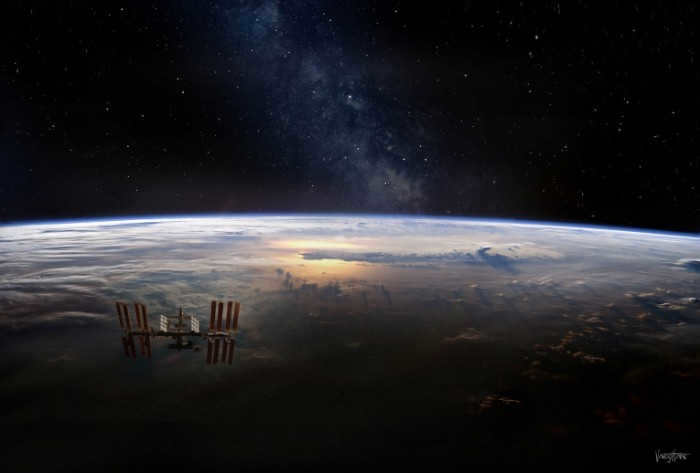
As we gaze up at the glittering night sky on a balmy summer evening, each one of us contemplates – what lies beyond, how is it all structured, and what role do we play in this vast Universe? Pondering the fragility of earthly existence juxtaposed with the enormity of cosmic existence, we contemplate the grand and the minuscule, envisioning the sky as a black velvet canvas adorned with stars resembling droplets of milk. And in the daylight, perhaps, there will be clouds… These musings may be poetic, but scientists approach the starry sky with an entirely different perspective. And each time, the results of their astronomical research leave us awe-struck. So, what exactly does the field of astronomy entail? And why is it of such importance?
What is the focus of the field of Astronomy?
Astronomy is a scientific discipline that investigates the composition and organization of the cosmos. It examines the positioning, movement, physical properties, origin, and development of celestial objects and systems. Astronomy also delves into the fundamental characteristics of the universe that surrounds us. More specifically, this field explores the sun and other stars, planets and their moons, black holes, galaxies and nebulae, quasars, asteroids, and more. The purpose of astronomy is to shed light on the inexplicable phenomena that occur in the universe and provide insight into our existence.
What was the origin of Astronomy?
Astronomy can be said to have originated when humans began to question the structure of our world. Initially, the concepts about the universe were rudimentary and rooted in religion. It was around the 6th or 4th century BC that people started studying the stars and their movements. As mathematical knowledge and physical research advanced, our understanding of the Universe improved. The first major breakthrough in astronomy occurred around 1500 BC with the emergence of spherical astronomy, precise calendars, and astrometry. The priests of Babylon, the Maya tribes’ calendars, and the knowledge passed down from ancient China and Egypt all played a role in the early stages of astronomy. It was the ancient Greek scientists, such as Pythagoras, who first proposed that the Earth is spherical, and Aristarchus of Samos who suggested that the Earth revolves around the Sun. The geocentric theory of the world, which posits that the Earth is at the center of the Universe, was a significant development of this period. Galileo made a substantial contribution to the advancement of astronomy.
What are the components of astronomy?
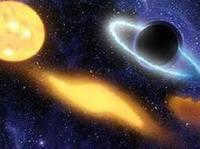
Astronomy, the study of the universe, encompasses various branches:
- Astrometry, which focuses on the motion and position of celestial objects.
- Celestial Mechanics, which determines the mass and shape of stars while studying the laws governing their movement under gravitational forces.
- Theoretical astronomy, where scientists develop computer and analytical models to understand celestial bodies and phenomena.
- Astrophysics, which investigates the physical and chemical properties of cosmic objects.
- Archaeoastronomy, a field that explores the history of astronomy and seeks to uncover the astronomical knowledge of ancient civilizations.
Furthermore, there are segments that delve into the patterns of the spatial configuration of stars and planets, examining the progression of celestial entities.
The foundation of astronomy lies in observation

Astronomical experiments cannot be conducted in the same way as physicists do. The majority of data that astronomers gather about celestial objects is acquired through the use of electromagnetic radiation.
The observation of the universe is an intricate and time-consuming procedure that demands attentiveness, consistency, and focus. Consequently, referring to units of measurement such as meters and kilometers in the field of astronomy is impractical.
Techniques employed in other disciplines such as mathematics and physics are also extensively utilized in the field of astronomy. Outer space serves as the sole realm where substances can exist at temperatures ranging from hundreds of millions of degrees to near absolute zero, within the vacuum void, and even in neutron stars. In addition, astronomy has also made significant contributions to the fields of geology, biology, geography, and history.
Astronomy as a leisure activity
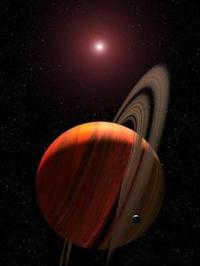
The field of astronomy and astronautics has long captured the fascination of numerous individuals. The global community of amateur astronomers is incalculable, and it is frequently due to their efforts that numerous breakthroughs in the field of astronomy have been made. A notable example occurred in 2009 when Australian observer Anthony Wesley, while observing Jupiter, detected evidence of a celestial object impacting the planet, possibly a comet.
Nowadays, there is a vast selection of top-notch scientific videos available, showcasing the wonders of space, including stars, planets, and galaxies. These videos are meticulously crafted with stunning graphics and authentic footage captured in space, guaranteeing to captivate your interest and enhance your understanding of the fascinating field of astronomy. Take a look at a few of these captivating films featured below.
Author: Tatiana Sidorova, update date: 15.03.2018
Reprinting without an active link is prohibited!
Astronomy serves a purpose as it raises us beyond our individual selves; it serves a purpose as it is grand; it serves a purpose as it is awe-inspiring. It is astronomy that illustrates to us the insignificance of mankind in the physical realm and the greatness of mankind in the realm of the spirit.
Henri Poincaré
What does astronomy involve?
Astronomy is a scientific discipline focused on understanding the vastness of the universe. Its main areas of study include the motion, order, and structure of celestial objects. Furthermore, it seeks to uncover the mysteries surrounding the origin and evolution of planets, stars, and other celestial bodies. In essence, astronomy is the exploration and analysis of space, planets, and various celestial entities.
At its core, astronomy relies on careful observation and exploration of the world beyond our planet. By studying the heavens, astronomers gain valuable insights into the workings of the universe.

Origin of Astronomy
The origin of astronomy can be traced back to ancient Greece, with the early studies conducted by Pythagoras and Aristotle.
The term “astronomy” is believed to have originated from the ancient Greek words “astrom,” meaning star, and “nomos,” meaning law. Therefore, it can be interpreted as the law of the stars or the stellar law.
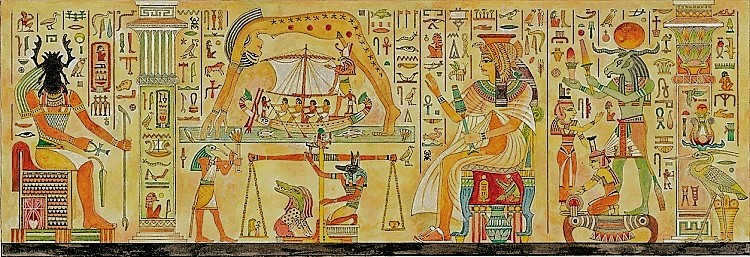
Astronomy: Exploring the Universe
Astronomy is a scientific discipline that focuses on the study of the entire universe. This encompasses all celestial objects and systems that exist within it.
So, what exactly does astronomy investigate? The field of astronomy includes the study of stars, planets, meteors, and comets. Furthermore, it delves into the exploration of galaxies, nebulae, and all other entities that reside in the vastness of outer space.
In other words, the vast expanse of space itself is the primary subject of study in astronomy.
What is the origin of science?
The field of astronomy predates other scientific disciplines and is considered one of the oldest sciences. While it is difficult to pinpoint an exact date for the emergence of astronomy, it can be traced back to ancient times, specifically the III-II centuries BC.
Our ancestors developed an interest in studying the world around them as a means of survival. This included the ability to navigate their surroundings and observe natural phenomena, which in turn led to the development of agricultural practices and timekeeping. These foundational principles were applied to various aspects of human life, from basic needs like food and clothing to expanding knowledge and satisfying curiosity.

The credit for the establishment of science is generally given to the scientist Hipparchus, who was among the pioneers in calculating the movements of the sun and moon. He also provided descriptions of these celestial bodies. Additionally, Hipparchus introduced a classification system for stars, categorizing them into six classes based on their brightness. Remarkably, this classification system remains in use even today.
Similar to any other scientific discipline, astronomy has its own objectives and tasks.
Currently, there are three primary objectives:
1) investigating the positions and movements of celestial bodies, as well as determining their shapes and sizes;
2) exploring the structure and composition of celestial bodies;
3) studying the formation, evolution, and future of celestial bodies.
In the past, astronomy relied more on philosophical perspectives. However, with advancements in technology, it has become a more precise field of study. Nowadays, it is closely intertwined with mathematics, physics, chemistry, and biology. Without a doubt, philosophy still plays a role in the fundamentals of astronomy.
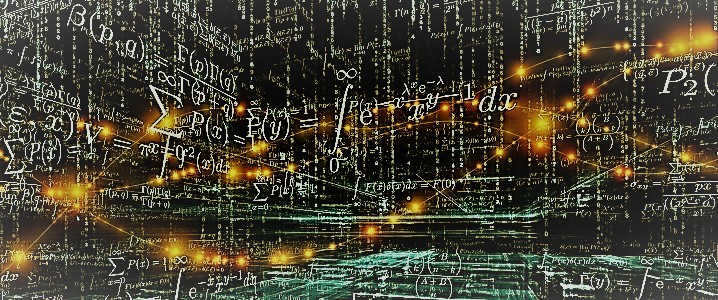
What is the primary objective of astronomy? It is probable that you have already discerned it.
The essential scientific discipline we have mentioned is focused on the study and exploration of the phenomena and entities of the cosmos. Naturally, this is done in order to comprehend the essence of the universe, understand its structure and characteristics.
Mankind aspires to unravel its enigmas and puzzles. Scientists strive to elucidate the origins of everything. Moreover, everyone desires to uncover what the future holds. To ascertain the truth and gain a genuine understanding of the world.
Thanks to the field of astronomy, we have already gained a wealth of knowledge. Looking ahead, we can confidently say that there is a great deal more in store for us. Progress never ceases, after all. We can be certain that science has progressed, is currently progressing, and will continue to progress.
Until then, farewell!
What is the definition of the terms hieroglyph, papyrus, scroll, calendar, astronomy, and water clock?

The term “hieroglyph” refers to a specific symbol used in various writing systems.
Papyrus was a commonly used writing material in ancient Egypt and later adopted throughout the ancient world.
A scroll is a long sheet of writing material, such as papyrus, parchment, or paper, that is rolled up for storage.
A calendar is a system for measuring large periods of time based on the regular movements of celestial bodies.
Astronomy is a scientific discipline that explores the position, movement, structure, origin, and evolution of celestial bodies and the systems they form.
A water clock, which dates back to Ancient Egypt, is a device used to measure time intervals using a cylindrical vessel and a steady flow of water.

Hieroglyphs are ancient letters or even combinations of words in an ancient language, papyrus is an ancient type of paper on which hieroglyphs were written, a calendar is self-explanatory, astronomy is the study of stars and planets, and as for a water clock, I’m afraid I don’t have any information on that.

What is the meaning of hieroglyphics and calendar?
What do hieroglyphics and calendar represent?

What is a word marker?
A word marker can be represented in various forms such as a hieroglyph, tissue paper scroll, calendar, astronomy, or a water clock.

Can you define the following terms: hieroglyph, papyrus whistle, calendar, astronomy, water clock?
Kindly assist me in understanding these concepts, and I will reward you with 15 points.

NEED IMMEDIATE ASSISTANCE?
1) Can you provide information on hieroglyphics, papyrus scrolls, calendars, astronomy, and water clocks in ancient Egypt?
2) How did the educational institutions in Egypt support and enhance learning?
And 3) What careers did the graduates of Egyptian schools pursue?

Define the significance of the terms: hieroglyph, papyrus scroll, calendar, astronomy, and water clock?
Elucidate the meaning behind the words: hieroglyph, papyrus scroll, calendar, astronomy, and water clock.

What is the basis for the formation of the rows?
What is the principle behind the formation of the rows?
Please provide the most precise answer you can.
A) Basset, Thoth, Anubis, Seth B) Papyrus, scribe, hieroglyph, scroll.

Definition of papyrus scroll

Concise definitions of terms: hieroglyph, papyrus scroll, calendar, astronomy, water clock, Sumerians, cuneiform, clay tablet?
Concise definitions of terms: hieroglyph, papyrus scroll, calendar, astronomy, water clock, Sumerians, cuneiform, clay tablet.

Can you provide an explanation of the following terms: hieroglyph, papyrus, column, obelisk?
Please explain the concepts of hieroglyph, papyrus, column, and obelisk.

Can you provide definitions for the following terms: hieroglyph, papyrus, scroll, calendar, astronomy, and water clock?
Can you explain what the terms hieroglyph, papyrus, scroll, calendar, astronomy, and water clock mean?
On this particular webpage, you will discover explanations for the meanings of certain words such as hieroglyph, papyrus, scroll, calendar, astronomy, and water clock. These words pertain to the category of History. The level of difficulty of this inquiry is suitable for students in grades 5 to 9 who possess fundamental knowledge. In order to obtain more detailed information, please feel free to explore other questions that are associated with this topic using the search engine provided. Alternatively, you can create a new question by selecting the button located at the top of the webpage and utilizing keywords that align with your specific criteria. Engage with fellow visitors of this webpage and engage in discussions about the topic at hand. It is possible that their responses may assist you in locating the information you are seeking.
Please elucidate the definitions of the following terms: hieroglyph, papyrus scroll, calendar, astronomy, and water clock.

Hieroglyph is the term used to describe a specific character in certain writing systems.
Papyrus scroll was a commonly used writing material in ancient Egypt.
In ancient Rome, a calendar was used as a debt book, with debtors paying interest on specific calendar days.
A water clock is a device used to measure time intervals, typically consisting of a cylindrical vessel with water flowing out.
Astronomy is the scientific study of the universe, including the position, motion, structure, origin, and development of celestial bodies and systems.

What do hieroglyphs, papyrus scrolls, calendars, astronomy, and water clocks represent?
What do hieroglyphs, papyrus scrolls, calendars, astronomy, and water clocks symbolize?
Can you assist me?
Please provide me with a definition of the terms Tutankhamun, hieroglyphics, and scroll.
Could you kindly provide me with a definition, if you don’t mind?
Could you kindly provide me with a definition, if you don’t mind?

Define the definitions of the terms: hieroglyph, papyrus scroll, calendar, astronomy, water clock?
Define the definitions of the terms: hieroglyph, papyrus scroll, calendar, astronomy, water clock.
What are the meanings of hieroglyphics, papyrus scroll, calendar, astronomy, water clock?
What are the meanings of hieroglyphics, papyrus scroll, calendar, astronomy, water clock?

Elucidate the significance of the terms hieroglyph, papyrus scroll, calendar, astronomy, water clock?
Elucidate the significance of the terms hieroglyph, papyrus scroll, calendar, astronomy, water clock.

Can you elucidate the significance of the word hieroglyphics?
Can you elaborate on the significance of the term hieroglyphics?

Can you elucidate the significance of the term papyrus relief pharaoh hieroglyph?
Could you provide an explanation for the significance of the phrase papyrus relief pharaoh hieroglyph?

What do Hieroglyphs, calendars, and astronomy have in common?
Do Hieroglyphs, calendars, and astronomy share any similarities?

Can you provide the definitions of hieroglyph, papyrus scroll, calendar, astronomy, and water clock?
Please explain the meanings of the words hieroglyph, papyrus scroll, calendar, astronomy, and water clock.
This particular page falls under the History category and offers an explanation for the question: What do the words hieroglyph, papyrus scroll, calendar, astronomy, and water clock mean? This question is aimed at students in grades 5-9. If you’re interested in learning more about this topic, you can use the automatic search function within the same category to find answers to similar questions. At the top of the page, there’s a button that allows you to ask a new question that aligns with your specific search criteria. The user-friendly interface also enables you to engage in discussions about the topic with other visitors through the comments section.

Please elucidate the definitions of the terms: hieroglyph, papyrus whistle, calendar, astronomy, water clock?
Kindly expound upon the meanings of the words: hieroglyph, papyrus whistle, calendar, astronomy, water clock.
I would greatly appreciate it if you could grant me 15 points.

Can you provide an explanation for the following terms: hieroglyph, papyrus, scroll, calendar, astronomy, and water clock?
I would like to understand the meaning behind the following words: hieroglyph, papyrus, scroll, calendar, astronomy, and water clock.

The Tudors: An Introduction

Can you provide a definition of a nobleman?
Can you explain to me the meaning of the term “nobleman”?

Can you please clarify the concept of a republic of scholars [ explain ]?
Could you provide an explanation of what a republic of scholars [ explain] is?

Can you provide an explanation of Confucian governance?
Can you explain what Confucian governance is?

What is the definition of calendar and astronomy?
What do calendar and astronomy mean?

Can you provide an explanation of the following terms: hieroglyph, papyrus, scroll, calendar, astronomy, and water clock?
I would like to understand the meaning of the words hieroglyph, papyrus, scroll, calendar, astronomy, and water clock.

What was the reason for the priests in Egypt to pursue astronomy?
What prompted the priests in Egypt to take up the study of astronomy?

What is this?
Can you explain the content of this image?
This page provides information on the topic of astronomy and its history. It is specifically related to the program for students in grades 5-9. If you are looking for other answers, you can use our smart search feature. By using keywords, you can find similar questions and answers in the History category. To find an answer that best fits your search criteria, you can use the simple interface provided. Just click the button at the top of the page and rephrase your question if needed. Additionally, you can also read and comment on the answers provided by other users.


The hard work of farmers sustained the whole population of Egypt. They primarily planted wheat and barley. Various tools were employed for different stages of farming. The initial step involved using a hoe to loosen the soil, which was later replaced by a wooden plow with a copper tip….
El, Baal-Shamim, Baal-Malaki (or Baal-Malage) , Baal-Tsafon, Astarte, Tinnit, Tzid, Yevo, Bel, Yam, Arz, Dionysus.

1. If I remember correctly, the liberation of the Grand Duchy of Moscow from the Golden Horde invasion took place. 2. It happened in 1480. There was a Battle on the Ugra River, where the Russian forces emerged victorious and the yoke was overthrown.

If you haven’t attached a photo, how can I assist you?

The individual possesses a determined, astute, and easily provoked temperament, with a specific aversion to the haughty aristocracy. This aversion is particularly evident in instances of blatant injustice and arbitrary actions perpetrated by the privileged against the vulnerable and powerless.

The community will be dissolved in order to ensure equal rights for peasants and other social classes.

Ivan 3 – y Vasilyevich was born on January 22, 1440. He was the offspring of Vasily 2 – y Dark, the ruler of Moscow, and Maria Yaroslavna, the daughter of Prince Yaroslav Borovsky. Prince Ivan 3 – y is more commonly recognized as Ivan the Holy and Ivan the Great. Here is a concise account of his life.

Ivan III, also known as Ivan the Great, was the Grand Duke of Moscow and the ruler of all Russia. During his reign, the country achieved independence from the Golden Horde and expanded its territories. As a young boy, Ivan actively participated in military campaigns against the Tatars in 1448, 1454, and 1459, contributing to the growth and stability of the state.
© 2000-2023. All rights reserved. Reproduction in whole or in part without permission is prohibited. 16+
The website is protected by reCAPTCHA technology, and it is subject to Google’s Privacy Policy and Terms of Use.
What is astronomy
The exact discoverer of astronomy remains unknown. Many scientists have contributed to the development of this field of study. Today, astronomy refers to the study of the universe, including the position, structure, movement, and evolution of celestial bodies.
Astronomy is the scientific study of the Sun, stars, and other celestial objects. It also encompasses the investigation of planets within our solar system, as well as asteroids, comets, meteoroids, exoplanets, satellites, interplanetary matter, and various other phenomena. The term “astronomy” originates from the ancient Greek words “aster,” meaning “star,” and “nomos,” meaning “law,” “establishment,” or “custom.”
Unlike physicists, astronomers do not have the ability to conduct experiments. Instead, they rely on gathering information about celestial objects through the use of electromagnetic radiation. The process of observing the universe is incredibly complex and requires a great deal of attention and concentration. As a result, astronomical units are used in astronomy, rather than traditional units of measurement like meters or kilometers.
Contributions of Scientists in the Field of Astronomy
The exact inventor of astronomy is difficult to determine, but it is known that numerous researchers played a significant role in advancing this field of science.
Thales of Miletus
Thales, an ancient Greek mathematician and philosopher, is credited with discovering the constellation of the Little Bear as a navigational aid for the Greeks. The Phoenicians had previously used this constellation for the same purpose.
Thales is also believed to have developed the theory of the inclination of the ecliptic to the equator. He identified five circles on the celestial sphere: the celestial equator, the summer and winter tropics, and the Arctic and Antarctic circles.
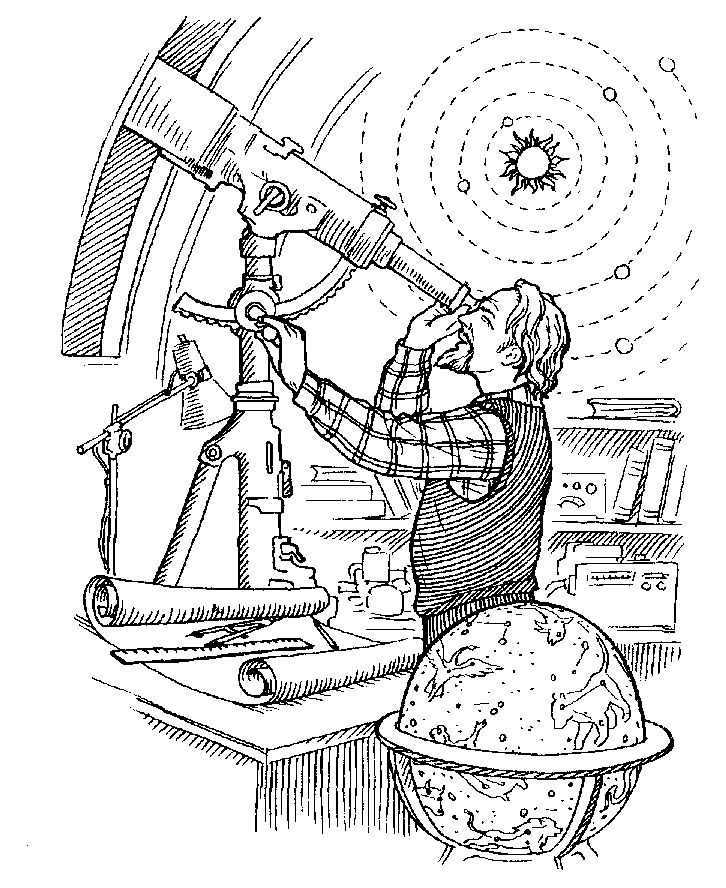
The ancient Greek philosopher acquired knowledge in determining the time of equinoxes and solstices. He successfully determined that the intervals between them are not consistent. Thales was the first to ascertain that the Moon emits light that is reflected. Furthermore, he made the discovery that solar eclipses are connected to the movement of the Moon. Additionally, Thales was able to calculate the angular dimensions of the Sun and the Moon.
This scholar is also recognized as the creator of the well-known mathematical approach to examining the motion of celestial objects. He devised a calendar based on the Egyptian design. This calendar consisted of 365 days and was divided into 12 months, each consisting of 30 days. Additionally, 5 days were excluded.
This individual began their career in the field of science as the inaugural observational astronomer. Records detailing Cleostratus’ observations of the celestial sky from Mount Ida, situated on the island of Crete, have managed to endure throughout history. Furthermore, this individual is credited as the writer of the poetic work titled “Astrology”.
A disciple of Cleostratus, whose identity remains undisclosed, managed to calculate the duration of the tropical year. This measurement represents the period in which the Sun completes a full rotation of the changing seasons.
Eudoxus of Cnidus
This intellectual was the pioneer to answer Plato’s plea. He is acknowledged as the founder of the institution that laid the groundwork for abstract astronomy. Eudoxus devised an intricate blueprint of the celestial bodies’ trajectory, which elucidated their movement across the expanse. He successfully delineated the orbits of all entities except for the red planet, Mars. Furthermore, this adventurer was the inaugural European to compile an inventory of the constellations.
The Greeks firmly believed that the heavens were composed of solid, transparent spheres. These spheres were spherical in shape and positioned at various distances from the Earth’s surface. The celestial bodies, such as the stars, were affixed to these celestial spheres. The outermost sphere held the stars, and it was responsible for the daily revolution. Eudoxus, by calculating the rate of rotation, was even able to account for the loops traced by Mars, Saturn, and Jupiter in relation to the stars.

Later on, Aristotle included Eudoxus’ model in his own theory. Unfortunately, this addition did not improve its accuracy, as the “Eudoxus spheres” were not present in reality.
This renowned philosopher of ancient Greece was born on the island of Samos in the Aegean Sea. He was among the pioneers in utilizing geometric calculations to approximate the dimensions of the Moon and the Sun. Moreover, he successfully determined the correlation between their sizes and the orbits they traverse. Nevertheless, the philosopher committed numerous errors. According to his computations, the Sun’s diameter was six times greater than that of the Earth’s, whereas the Moon was three times smaller.
Aristarchus firmly believed in the Sun’s position at the center of the planetary system. Meanwhile, his peers openly mocked this notion, deeming the scientist’s theory an affront to the gods. Furthermore, the astute scholar successfully elucidated the phenomenon of day and night on Earth, attributing it to the planet’s rotation on its axis. He also coined the term “Earth satellite” to describe the moon.
Eratosthenes
Eratosthenes was a multifaceted scholar, excelling in the fields of astronomy, philosophy, and geography. He also made significant contributions to the advancement of mathematics. One of his notable inventions was a device that enabled him to accurately determine the locations of villages and towns. Additionally, Eratosthenes held the esteemed position of being the head of the renowned Library of Alexandria.
One of Eratosthenes’ most notable achievements was his groundbreaking determination of the Earth’s circumference. Through his research, the astronomer discovered that during the summer solstice, the Sun’s rays directly penetrated the wells of Aswan, while objects in Alexandria cast only a minimal shadow. Eratosthenes hypothesized that this phenomenon was a result of the Earth’s curved surface. By measuring the distance between the two settlements, the scholar was able to calculate the radius of the Earth.
This scientist is regarded as the pioneer of scientific astronomy. He is frequently referred to as the most renowned astronomer of ancient times. Over many years, the researcher meticulously observed celestial bodies, conducting comparisons with the findings of Babylonian astronomers.
Hipparchus is credited with creating the most precise star catalog, which encompassed over 1000 stars. Additionally, he was the first to formulate the concept of stellar magnitudes, categorizing them into six groups – ranging from the most luminous to the faintest.

The scientist successfully conducted highly accurate measurements, leading him to discover that the length of the seasons differs slightly. This phenomenon was attributed to the unique position of the Sun in the celestial sphere. Additionally, the researcher made significant contributions to the calendar system by determining that the length of a year is approximately 365.25 days.
Claudius Ptolemy
Claudius Ptolemy was a brilliant scientist who played a crucial role in the advancement of ancient astronomy. His most notable contribution was his groundbreaking work, “The Great Mathematical Construction,” which quickly became the go-to textbook for mathematicians and astronomers alike.
This remarkable piece of literature encompassed all the astronomical knowledge accumulated since ancient times. Additionally, Ptolemy included several of his own discoveries and even compiled a comprehensive catalog of the celestial sphere, featuring 48 constellations and 1022 stars.
Ptolemy meticulously described all the instruments and calculation methods available during his era, providing a valuable resource for future generations. Furthermore, he devised a mathematical model of the universe, famously known as the “Ptolemy system,” which gained widespread recognition and acceptance.
It is worth mentioning that this particular work had little to do with natural phenomena. However, it enabled accurate predictions of celestial object movements, eclipse timings, and planetary alignments in the sky.
Nicolaus Copernicus
This Polish astronomer received education from esteemed institutions including Bologna, Krakow, and Padua. During his time there, Copernicus delved into various fields of study, including astronomy. In 1512, he became a canon in Frombork, where he conducted astronomical observations and delved into the study of the universe.
Copernicus was able to provide a clear rationale for the retrograde motion of the planets. In his groundbreaking treatise, he outlines the principles for determining the apparent positions of celestial bodies, including planets, stars, and the Sun. Additionally, the visionary scientist delves into the behavior of the moon, provides detailed descriptions of various planets, and offers explanations for the fluctuations in their latitudes.
Tycho Brahe
Tycho Brahe, a Danish scientist, had a significant impact on the field of astronomy during the Renaissance. He is renowned as the first European astronomer to meticulously record precise and uninterrupted observations. These observations would later serve as the foundation for Johannes Kepler’s formulation of the laws of planetary motion.

In November 1577, Tycho Brahe observed a comet in the sky. He meticulously studied the path of this celestial object until it vanished from sight in 1578. Through comparing his findings with those of other scientists, Brahe arrived at a significant conclusion: comets are not simply atmospheric phenomena, as Aristotle had previously believed. Rather, they are extraterrestrial objects that exist at a distance three times greater than that of the Moon.
Brahe documented his research in a comprehensive treatise, which spanned multiple volumes. The second volume, which focused on the celestial system, was the first to be published, and it also featured a detailed account of the 1577 comet. The initial installment was released at a later date, specifically in 1592. Additionally, the work remained incomplete.
Johannes Kepler
This German mathematician is renowned for his groundbreaking discoveries in the field of planetary motion within the solar system. Kepler revolutionized astronomical science by formulating the laws that govern the movement of planets, thus resolving the debate between geocentric and heliocentric systems.
During the late sixteenth century, conflicting theories regarding the motion of celestial bodies prevailed. However, Kepler’s meticulous research and observations led to the formulation of his revolutionary laws, which provided a comprehensive explanation for the irregularities in planetary motion.
Kepler’s laws state that all planets follow elliptical orbits, with the Sun situated at one of the foci. The speed of a planet’s orbit varies depending on its distance from the Sun. To develop his theories, Kepler dedicated a decade to studying the orbit of Mars, meticulously collecting data and analyzing its motion.
Newton utilized the laws of planetary kinematics discovered by Kepler in his research on the theory of gravitation. Additionally, Kepler was the first to publish an extensive edition of Copernicus’ astronomy, which promptly became banned and placed on the Index of Banned Books. In this publication, Kepler detailed his own astronomical breakthroughs.
In the summer of 1627, Kepler released a set of astronomical tables that he had spent 22 years developing. These tables were highly sought after, as previous ones had become outdated. Notably, this was the first publication to include logarithmic tables, which greatly facilitated calculations. Kepler’s work remained in use by sailors and astronomers until the first half of the nineteenth century.
Galileo Galilei
Galileo Galilei is a well-known astronomer, physicist, and mathematician who played a significant role in advancing the field of science during his time. One of his notable contributions was the discovery of the laws governing the movement of a pendulum. Additionally, he is credited with inventing a gas thermometer and hydraulic scales, which were important scientific instruments of his era.
In 1609, Galileo constructed his own telescope with a convex lens and a concave eyepiece. This telescope provided a modest threefold magnification. However, he soon improved upon his design and created a telescope that could magnify objects up to 32 times their original size.
The idea of a “telescope” was also proposed by Galileo. Galileo initially started studying celestial bodies on January 7, 1610. This enabled him to determine that the Moon has a diverse topography. Galileo associated the ash-like color of the celestial body with sunlight being reflected off the Earth.
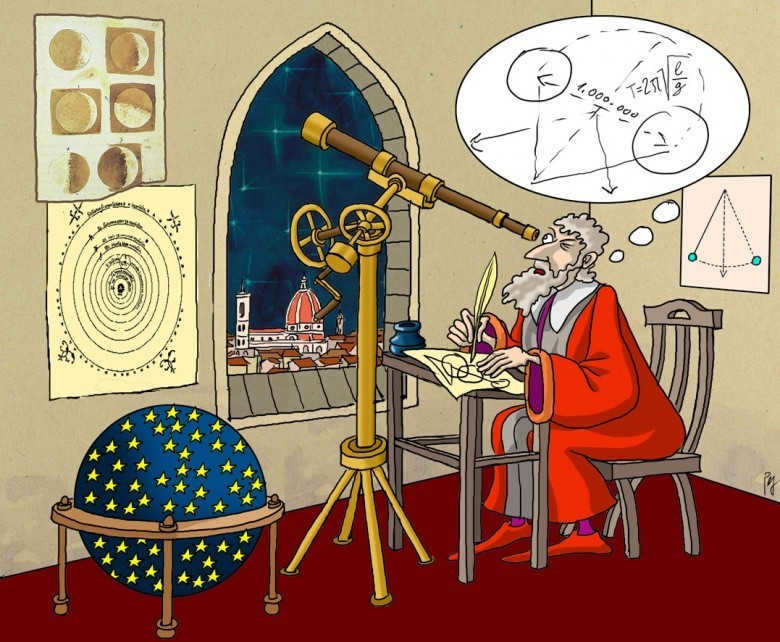
The astronomer successfully refuted a key argument put forth by opponents of the heliocentric theory, which claimed that the Earth cannot revolve around the Sun since the Moon revolves around it. Through his research, the scientist was able to provide evidence that the Sun has observable spots. Furthermore, he extensively studied the planets within our solar system, accurately determining their rotation periods, and ultimately concluded that these celestial bodies are located at a considerable distance from Earth. Moreover, Galileo posited that the universe is infinite in its vastness. Notably, the scientist made a groundbreaking discovery, establishing that the Milky Way is not a mere cloud but rather a conglomeration of stars.
Edmund Halley
Edmund Halley, a renowned British scientist, held the prestigious position of Royal Astronomer, in addition to being a physicist and mathematician. During his time at Oxford University, where he was studying in his third year, Halley published his first scientific work titled “About the orbits of the planets”. This groundbreaking research allowed him to uncover notable distinctions between the orbits of Saturn and Jupiter. Halley’s contributions to the field of astronomy extended beyond this initial work, as he also compiled the comprehensive “Catalog of the Southern Sky”, containing valuable information about 341 stars located in the Southern Hemisphere.
In 1693, the scientist made a groundbreaking discovery regarding the Moon’s movement. It was found that the Moon was gradually getting closer to the Earth, a phenomenon known as the secular acceleration. Around the same time, in 1677, Halley devised a revolutionary method to measure the distance between the Earth and the Sun. This method involved tracking the movement of Venus across the Sun’s surface from two different locations with varying latitudes. This breakthrough allowed Halley to introduce a new unit of measurement known as the astronomical unit. Thanks to Halley’s innovative approach, scientists were able to significantly improve the accuracy of calculating the solar parallax, reducing the margin of error by a remarkable 25 times by the end of the nineteenth century.
The researcher’s name is also linked to a revolutionary shift in understanding comets. Before Newton’s theories, these celestial bodies were seen as wanderers that simply passed through the solar system in parabolic orbits. In 1705, Halley calculated the orbits of 24 comets and discovered that several of them shared similar parameters with the comet from 1682.
In 1716, the scientist presented detailed calculations, stating that this comet was actually one and the same. It was predicted to return at the end of 1758. The celestial object was indeed identified, and it reappeared on the exact date predicted by Halley, providing the first confirmation of Newton’s theory and bringing the scientist widespread recognition. Today, this celestial object is known as Halley’s Comet.
Due to his accomplishments, the scientist was honored with the title of Master of Astronomy at Oxford and was granted membership to the Royal Society. In fact, Halley was the pioneering researcher who brought attention to nebulae among other scientists. During that era, nebulae were a perplexing phenomenon. In a publication from 1715, the scientist proposed that they were celestial entities emitting their own light.
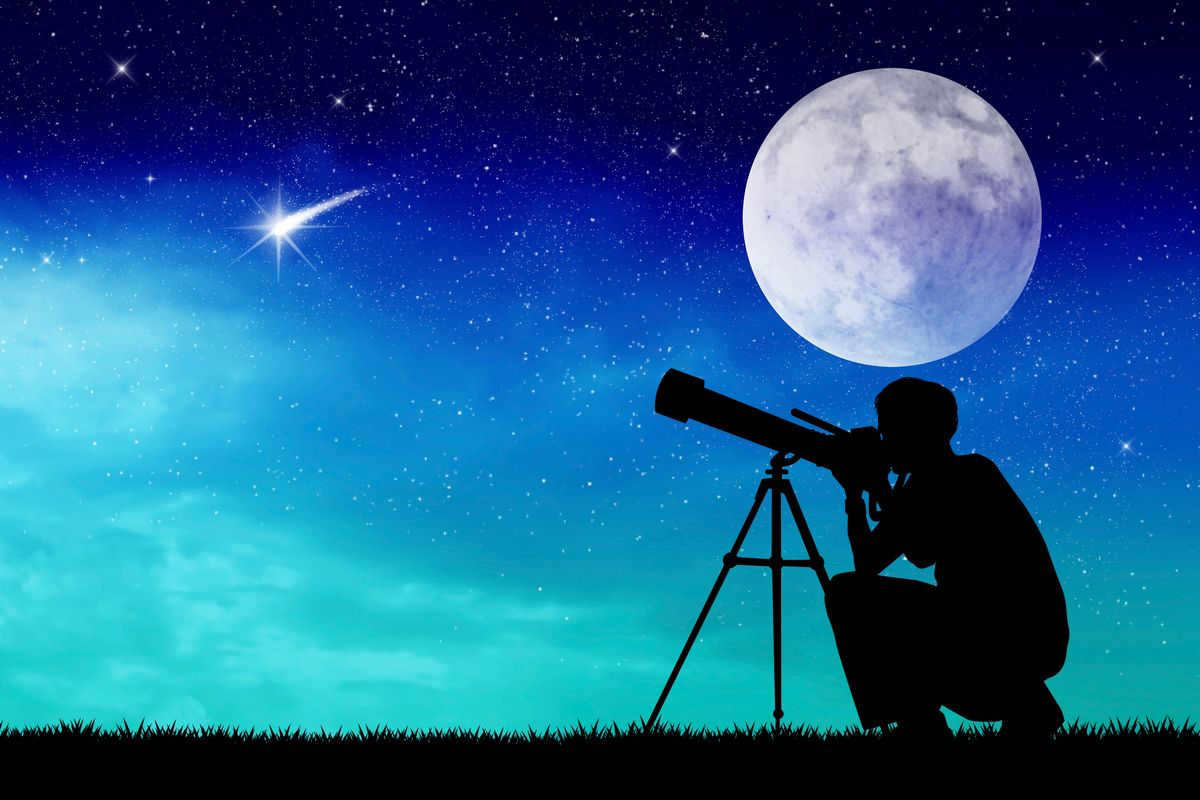
Mikhail Lomonosov
Mikhail Lomonosov is renowned as the first scientist of great significance from Russia. In the realm of astronomy, Lomonosov gained recognition for his groundbreaking discovery of the presence of an atmosphere on Venus. This remarkable finding occurred on May 26, 1761, when the scientist observed the movement of Venus as it traversed the solar disk.
In addition to his astronomical achievements, Lomonosov was an innovator in the field of optics. He designed and constructed various cutting-edge optical instruments and even established a school dedicated to applied and scientific optics. Among his notable inventions is the catoptric-dioptric incendiary system. Additionally, he invented a device for concentrating light known as a nocturnal tube. This ingenious contraption was specifically designed for studying distant objects at sea during nighttime. Lomonosov was well-versed in the works of Newton and Gregory, and he proposed his own unique design based on their principles.
An experimental prototype of the new apparatus was created by Lomonosov in April 1762. It was demonstrated by the researcher at the Academic Assembly on May 13. However, the details of this invention were not published until 1827. Interestingly, a similar breakthrough was later suggested by Herschel, and as a result, the system was subsequently named after him.
William Herschel
A significant contribution to the advancement of astronomy was made by William Herschel, a renowned British scientist of German descent. He revolutionized the field with his innovative design of reflectors, which were unparalleled during his time. These reflectors boasted a remarkable mirror diameter of 1.2 meters, and Herschel possessed exceptional skill in utilizing them effectively.
Herschel achieved numerous groundbreaking discoveries during his career. Among his notable accomplishments, he was the first to identify the planet Uranus and observe its peculiar retrograde motion of its satellites. Additionally, Herschel made significant observations regarding Saturn, identifying several of its satellites and providing detailed descriptions of its rings. His research extended to Mars, where he established the existence of seasonal changes on the planet’s surface. Furthermore, Herschel’s keen observations of Jupiter allowed him to explain the formations of its stripes and spots as atmospheric clouds. Notably, he also accurately measured the time required for Saturn to complete a revolution.
The scientist made an intriguing discovery that the entire solar system was making its way towards the constellation Hercules. During the analysis of the solar spectrum, the researcher stumbled upon the existence of infrared rays, which ultimately led to uncovering the link between the solar system and the various processes that take place on Earth.
In his extensive studies, William Herschel came across more than 2,500 previously unknown nebulae. The scientist dedicated his efforts to understanding their structure and how they interact with each other. He referred to the rounded nebulae as planetary and believed that they were clusters of diffuse matter where stars and planetary systems were formed. It turns out, however, that all the nebulae Herschel discovered were actually galaxies. Nevertheless, the scientist’s notion that the process of star formation is an ongoing phenomenon remains valid to this day.
Astronomy, a discipline with roots dating back several millennia, is considered one of the oldest sciences. Throughout history, numerous scientists have made significant contributions to its advancement, leading to the discovery of important patterns and principles.





